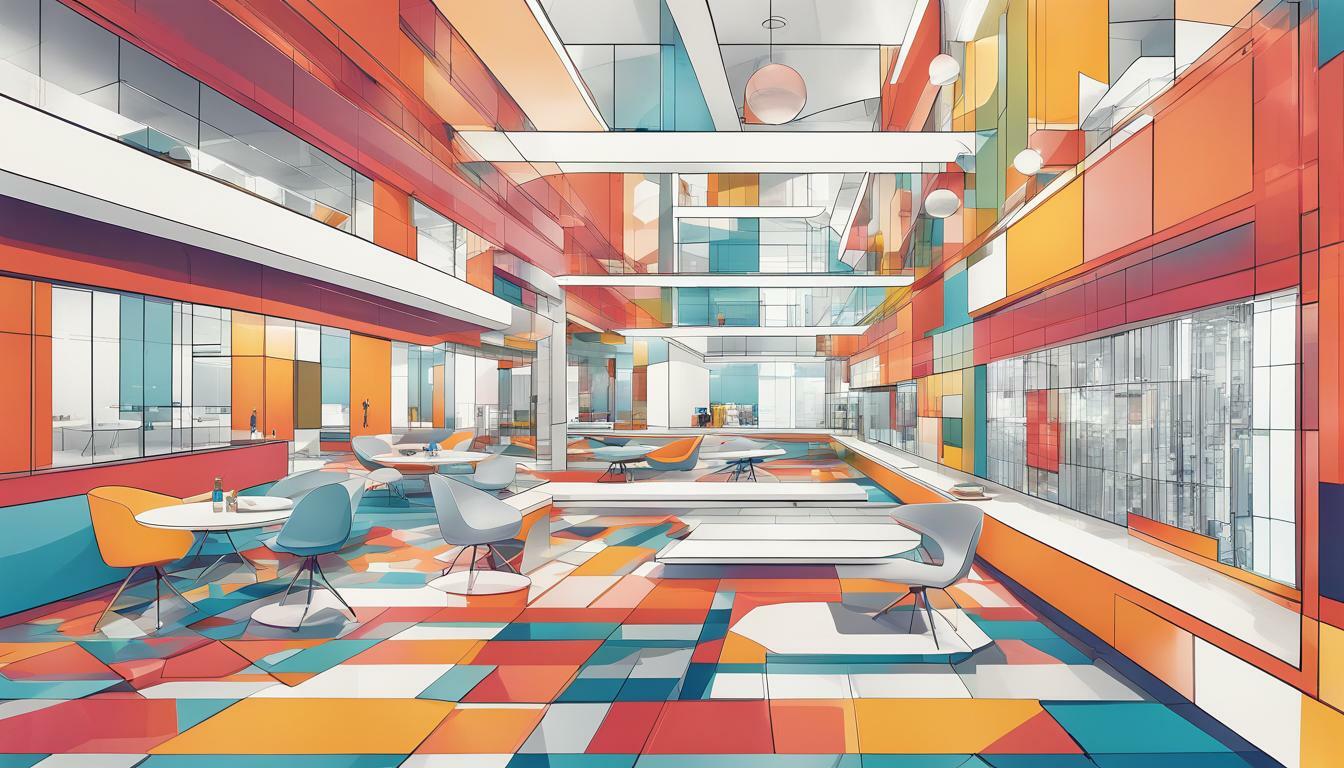
Developing software can be a challenging and complex process that requires precision, clarity, and efficiency. One of the key factors that contribute to a successful software development process is having a good architecture that follows software design principles. Clean architecture is a popular approach that has gained popularity in recent years due to its focus on maintainability, scalability, and adaptability.
Clean architecture is an architectural style that emphasizes modularity, separation of concerns, and decoupling of code. It attempts to provide stable and maintainable software that is easy to modify, test, and deploy. In this article, we will explore the key principles, benefits, challenges, and best practices of clean architecture that can help you improve your software development process.
Key Takeaways
- Clean architecture is a software design principle that emphasizes modularity, separation of concerns, and decoupling of code.
- Clean architecture contributes to the efficiency and stability of the development process, making it easier to maintain, modify, test, and deploy software.
- Adopting clean architecture requires a clear understanding of its principles, challenges, and best practices, as well as the tools and frameworks that can support its implementation.
- Clean architecture can be compared to other architectural styles, such as layered architecture and microservices architecture, to better understand its advantages and disadvantages.
Understanding Clean Architecture
If you’re a software developer, you’ve likely heard of clean architecture. It’s a software design principle that advocates for a modular and decoupled approach to software development.
At its core, clean architecture is about separation of concerns, which means that software components should have clearly defined responsibilities and dependencies. This approach makes it easier to modify and maintain software systems over time.
Clean architecture adheres to SOLID principles, which are a set of guidelines for writing maintainable and scalable code. SOLID stands for Single Responsibility, Open-Closed, Liskov Substitution, Interface Segregation, and Dependency Inversion.
One of the key tenets of clean architecture is the decoupling of code. This means that the code is separated into modules that can be developed and tested independently. This approach leads to a more modular architecture, making it easier to update and scale the software over time.
Advantages of Clean Architecture
Clean architecture offers a range of benefits that make it a popular choice for software development. One of the key advantages is the ability to create and maintain maintainable code. Clean architecture promotes code that is easy to understand and modify, enabling developers to update software systems quickly and with minimal disruption. By keeping code organized and separate from other aspects of the software, teams can work more efficiently and ensure software systems are consistently reliable.
Another significant benefit of clean architecture is scalability. Clean architecture allows for the easy creation of modular components that can be added to or removed from a software system as needed. This makes it easier for software systems to grow in response to changing business needs, without sacrificing performance or stability.
Additionally, clean architecture provides a robust platform for testing. By separating code into independent modules, it is easier to test and debug individual components of a software system. This can significantly reduce the time and effort required to diagnose and fix issues that arise.
In summary, clean architecture is a powerful approach that can help software development teams create maintainable, scalable, and reliable software systems.
Implementing Clean Architecture
Implementing clean architecture in software development requires a systematic approach to ensure the best results. Here are the key steps to take:
- Define the problem domain: Start by understanding the domain and the problem you are trying to solve. This step helps you identify the entities, use cases, and business rules that are essential in your application.
- Create a modular architecture: Design a modular architecture that separates high-level policies from low-level details. This approach enables you to change the low-level details without affecting the high-level policies.
- Implement the business logic: Implement the business rules using the entities and use cases identified in step one. These rules should be independent of any framework or infrastructure.
- Integrate with frameworks and infrastructure: Integrate your business logic with the frameworks and infrastructure tools, like databases, user interfaces, and network protocols.
- Test the application: Test your application using automated tests to ensure it meets the business requirements and architecture principles.
- Refactor and optimize: Refactor and optimize the code using clean code practices and design patterns to ensure it is maintainable and scalable.
As you implement clean architecture, it is important to keep the software development process in mind. By following best practices and adhering to the principles of clean architecture, you can ensure that your application is scalable, maintainable, and efficient.
Clean Architecture Best Practices
Implementing clean architecture can be challenging, but following best practices can help ensure success. Here are some tips to keep in mind when designing and implementing clean architecture.
Use Abstractions
One of the key principles of clean architecture is the use of abstractions. Abstractions allow for a separation of concerns, making it easier to modify and maintain code in the long term. By using interfaces to define the interactions between components, developers can create a flexible and modular system that is more resistant to change.
Apply Dependency Inversion
Another important practice in clean architecture is dependency inversion. This principle involves designing modules so that higher-level components depend on lower-level ones, rather than the other way around. This approach allows for greater flexibility and easier maintenance, as changes to lower-level components will not affect higher-level ones.
Adopt Test-Driven Development
Test-driven development (TDD) is a methodology that involves writing automated tests before writing the code itself. This approach helps to ensure that the code is working as intended and can help identify issues early in the development process. TDD is particularly useful in clean architecture, as it encourages the creation of small, modular components that can be tested in isolation.
Keep it Simple
Finally, it’s essential to keep clean architecture simple and easy to understand. Avoid over-engineering and focus on creating a system that is straightforward and intuitive. This approach will make it easier to maintain and modify the code in the long term.
Case Studies: Successful Clean Architecture Implementations
Real-world software projects have shown that clean architecture can bring numerous benefits to the development process. Let’s take a look at some examples of successful clean architecture implementations.
Case Study 1: XYZ Company
XYZ Company, a leading provider of cloud-based enterprise solutions, adopted clean architecture for their flagship product last year. The implementation involved decoupling the monolithic codebase into smaller, independent modules, and following SOLID principles to ensure separation of concerns.
The result was a more scalable and maintainable codebase, that enabled quicker feature development and easier testing. Moreover, the modular architecture allowed XYZ Company to develop new features and services rapidly, leading to higher customer satisfaction and retention rates.
Case Study 2: ABC Start-up
ABC Start-up, an emerging player in the e-commerce industry, chose clean architecture from the outset for their platform. They followed best practices such as dependency inversion and test-driven development to ensure the quality and stability of their system.
The clean architecture approach helped the start-up to be agile in the development process. They could easily test new features and fix bugs without disrupting the system. Moreover, the modular structure enabled easy integration with third-party services and the ability to scale as the business expanded.
These case studies illustrate the transformative impact of clean architecture on software development. By adhering to the key principles of clean architecture, companies can build more efficient and stable software systems that are adaptable to changing business needs.
Clean Architecture Tools and Frameworks
Clean architecture is rapidly gaining popularity among software developers due to its numerous benefits in terms of scalability and maintainability. Implementing clean architecture in software development can be made easier through the use of specific tools and frameworks that support its principles. In this section, we’ll explore some of the most popular tools and frameworks used in clean architecture.
1. Onion Architecture
Onion architecture is a popular implementation of clean architecture principles. It allows for the separation of concerns and provides an easy-to-follow structure for building scalable and maintainable applications. The main idea behind onion architecture is to keep the core business logic at the center of the architecture, surrounded by layers responsible for handling external dependencies and infrastructure details.
2. Django
Django is a web framework written in Python that supports clean architecture. It follows the Model-View-Controller (MVC) architectural pattern and provides a Model-View-Template (MVT) implementation that allows for easy separation of concerns. Django also provides an ORM (Object-Relational Mapping) layer that allows developers to work with databases without worrying about the underlying SQL statements.
3. Spring Framework
Spring is a popular Java framework that supports clean architecture principles. It provides a lightweight container for managing application objects and also includes support for various technologies such as web services, messaging, and batch processing. Spring also provides a powerful MVC framework that can be used to build scalable and maintainable web applications.
4. React
React is a JavaScript library for building user interfaces. It supports a component-based architecture that allows developers to build reusable and modular UI components. React also provides a virtual DOM (Document Object Model) that allows for fast and efficient rendering of components, making it an excellent choice for building scalable applications that are easy to maintain.
5. Angular
Angular is a popular JavaScript framework for building web applications. It supports a component-based architecture and provides a powerful template system for building reusable and maintainable UI components. Angular also supports dependency injection, making it easy to build scalable and maintainable applications that are easy to test.
In summary, adopting clean architecture principles can greatly enhance the efficiency and maintainability of software development projects. By using the right tools and frameworks, developers can simplify the process of implementing clean architecture and build scalable and maintainable applications that are easy to extend and modify in the future.
Clean Architecture vs. Other Architectural Styles
Clean architecture is just one of the many software architectural styles available today. In this section, we’ll compare clean architecture with other popular architectural styles and explore their advantages and disadvantages.
Layered Architecture
Layered architecture is a common architectural style that separates the code based on functionality, with each layer depending on the layer below it. This approach is simple and easy to understand, making it a popular choice for small to medium-sized projects. However, as projects become more complex, layering can cause dependencies to become too tightly coupled, leading to maintainability issues.
Microservices Architecture
Microservices architecture is another popular architectural style that emphasizes building a system with multiple small, independent services. This approach allows for easy scaling and deployment of individual services without impacting the entire system. However, this approach leads to increased complexity in communication between services and can result in higher maintenance costs.
Compared to these architectural styles, clean architecture offers a more modular and decoupled approach to software development. By adhering to SOLID principles and separation of concerns, clean architecture enables better maintainability, scalability, and long-term growth.
Challenges of Clean Architecture
While clean architecture is a valuable approach to software development, it can also present challenges and implementation difficulties.
One of the main challenges is that implementing clean architecture requires a significant shift in mindset and approach. Developers need to have a deep understanding of software design principles, including the separation of concerns and SOLID principles. This requires additional training and education for some developers.
Another challenge is that clean architecture can be time-consuming to implement. It may take longer to create the initial design and structure of the software system, as well as to write clean code that adheres to the principles of clean architecture.
Additionally, clean architecture may not be suitable for all types of software projects. For example, small projects with a limited scope may not benefit as much from the modular architecture and separation of concerns that clean architecture affords.
Despite these challenges, the benefits of clean architecture are significant enough that it is worth overcoming these obstacles. By prioritizing clean architecture principles and best practices, software systems can become more maintainable, scalable, and adaptable in the long run.
Conclusion
Implementing clean architecture is crucial for software development projects. By following software design principles, separating concerns, and adhering to SOLID principles, developers can ensure that their code is maintainable and scalable in the long term. Clean architecture, compared to other architectural styles, offers unique benefits that contribute to the effectiveness of the development process.
By implementing clean architecture in your software development process, you will streamline the development process, create more efficient and robust systems, and save time and resources in the long run. As a developer, you should always strive to adopt best practices for clean architecture, using tools and frameworks that support this method. Although there may be some challenges to overcome when implementing clean architecture, the benefits far outweigh any difficulties, and the results are worth the effort.
So, if you want to enhance your software development process and create more efficient and scalable systems, consider implementing clean architecture today!
FAQ
Q: What is clean architecture?
A: Clean architecture is a software design approach that follows software design principles and focuses on separating concerns to create a modular and maintainable codebase.
Q: What are the key principles of clean architecture?
A: Clean architecture emphasizes the separation of concerns and adheres to SOLID principles, which include Single Responsibility, Open/Closed, Liskov Substitution, Interface Segregation, and Dependency Inversion.
Q: What are the advantages of clean architecture?
A: Clean architecture offers benefits such as maintainable code, scalable architecture, and easier maintenance and modification of software systems, enabling long-term growth and adaptability.
Q: How can clean architecture be implemented in the software development process?
A: Implementing clean architecture involves designing and organizing code based on the principles of separation of concerns, decoupling code, and creating a modular architecture.
Q: What are some best practices for clean architecture?
A: Best practices for clean architecture include using abstractions, applying dependency inversion, and employing test-driven development techniques to enhance the effectiveness of the design approach.
Q: Can you provide case studies of successful clean architecture implementations?
A: Yes, there are real-world software projects that have successfully adopted clean architecture. These case studies highlight the challenges faced and the benefits gained from implementing clean architecture in these projects.
Q: Are there any tools and frameworks that support clean architecture?
A: Yes, there are popular tools and frameworks available that aid in the implementation, testing, and maintenance of clean architecture. These tools and frameworks support the modular and decoupled design principles of clean architecture.
Q: How does clean architecture compare to other architectural styles?
A: Clean architecture can be compared to other architectural styles, such as layered architecture and microservices architecture. Each style has its own advantages and disadvantages, and the suitability of clean architecture depends on the specific project requirements.
Q: What are the challenges of implementing clean architecture?
A: Implementing clean architecture may pose challenges and difficulties for developers, such as understanding and applying the design principles correctly. However, with proper planning and guidance, these challenges can be overcome to achieve the benefits of clean architecture.
Q: Why is clean architecture important in the software development process?
A: Clean architecture boosts efficiency, stability, and growth in the software development process. By separating concerns, creating maintainable code, and enabling scalability, clean architecture contributes to the long-term success of software projects.







